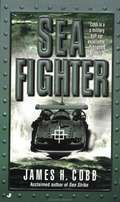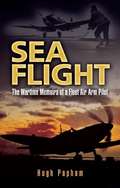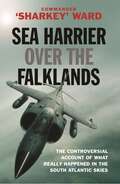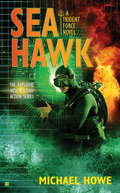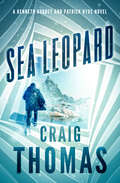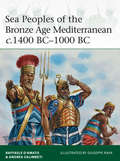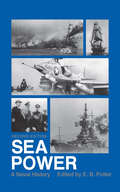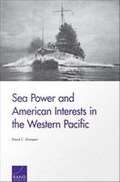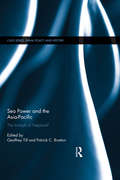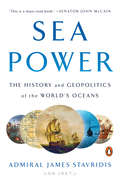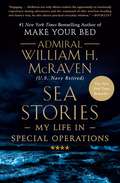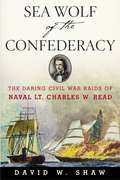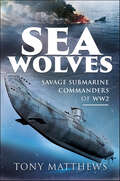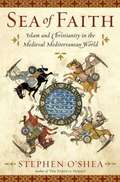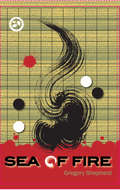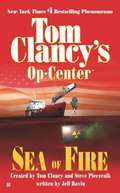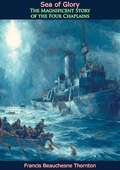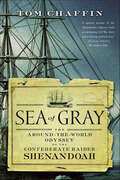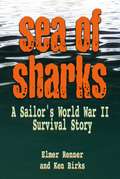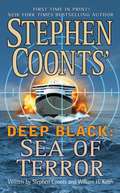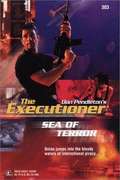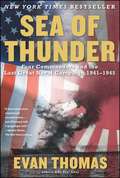- Table View
- List View
Sea Flight: The Wartime Memoirs of a Fleet Air Arm Pilot
by Hugh PophamHugh Popham joined the Fleet Air Arm in the summer of 1940 and was soon in training as a pilot at HMS Vincent and then Yeovilton; thereafter his wartime career as a naval pilot took him to the far corners of the world, notably to the Indian Ocean where he had to contend against the Japanese.His story is one of a naval fighter pilot having to do his best with hopelessly inadequate planes. First the Sea Hurricanes, and then the Supermarine Seafires, proved to be less than brilliant machines, the Seafire proving far too fragile for the rigours of carrier operations. But it is this story, incorporating the kind of detail that is missing from many wartime memoirs, that makes this book so fascinating.
Sea Harrier Over The Falklands (W&N Military)
by Commander Sharkey WardThe controversial first-hand account of what really happened in the south Atlantic skiesSharkey Ward commanded 801 Naval Air Squadron, HMS Invincible, was senior Sea Harrier adviser to the Command, flew over sixty missions and was awarded DSC. Yet had he followed all his instructions to the letter, Britain might well have lost the Falklands War.His dramatic first-hand story of the air war in the South Atlantic is also an extraordinary, outspoken account of inter-Service rivalries, bureaucratic interference, and dangerous ignorance of the realities of air combat among many senior commanders. As Sharkey Ward reveals, the 801 pilots were fighting not just the enemy, exhaustion, and the hostile weather, but also the prejudice and ignorance of their own side.
Sea Harrier Over The Falklands (W&N Military)
by Commander Sharkey WardThe controversial first-hand account of what really happened in the south Atlantic skiesSharkey Ward commanded 801 Naval Air Squadron, HMS Invincible, was senior Sea Harrier adviser to the Command, flew over sixty missions and was awarded DSC. Yet had he followed all his instructions to the letter, Britain might well have lost the Falklands War.His dramatic first-hand story of the air war in the South Atlantic is also an extraordinary, outspoken account of inter-Service rivalries, bureaucratic interference, and dangerous ignorance of the realities of air combat among many senior commanders. As Sharkey Ward reveals, the 801 pilots were fighting not just the enemy, exhaustion, and the hostile weather, but also the prejudice and ignorance of their own side.
Sea Hawk
by Michael HoweA mysterious terrorist known as the Sea Hawk has deployed underwater mines to disrupt cargo operations around the world and create political and economic chaos. The Trident Force plunges in, but even as they search beneath the sea, their sights remain on their higher objective: find the Sea Hawk and bring him down.
Sea Leopard (The Kenneth Aubrey & Patrick Hyde Series)
by Craig ThomasNew York Times–Bestselling Author: A captured submarine must be retrieved from the Russians before they can decode its cutting-edge technology . . . The Royal Navy is testing Sea Leopard, an anti-sonar device that can make its subs virtually undetectable. But before the work can be completed, their nuclear submarine Proteus is targeted and trapped by the Soviet Union—whose military is determined to figure out, and steal, this new technology. Spymaster Kenneth Aubrey sends SIS agent Patrick Hyde to locate the device&’s inventor before the KGB gets to him first. In the meantime, a US Navy officer is on his way to Russia in hopes of fixing Sea Leopard and getting Proteus out of drydock before it&’s too late . . . Praise for Craig Thomas&’s thrillers &“Will have you sweating bullets. Thomas misses no tricks, and tension is sustained from first page to last.&” —The New York Times Book Review &“High-octane.&” —Daily Express
Sea Peoples of the Bronze Age Mediterranean c.1400 BC-1000 BC
by Raffaele D'Amato Andrea SalimbetiSea Peoples of the Bronze Age and Mediterranean features the latest historical and archaeological research into the mysterious and powerful confederations of raiders who troubled the Eastern Mediterranean in the last half of the Bronze Age. Research into the origins of the so-called Shardana, Shekelesh, Danuna, Lukka, Peleset and other peoples is a detective 'work in progress'. However, it is known that they both provided the Egyptian pharaohs with mercenaries, and were listed among Egypt's enemies and invaders. They contributed to the collapse of several civilizations through their dreaded piracy and raids, and their waves of attacks were followed by major migrations that changed the face of this region, from modern Libya and Cyprus to the Aegean, mainland Greece, Lebanon and Anatolian Turkey. Drawing on carved inscriptions and papyrus documents - mainly from Egypt - dating from the 15th-11th centuries BC, as well as carved reliefs of Medinet Habu, this title reconstructs the formidable appearance and even the tactics of the famous 'Sea Peoples'.
Sea Power
by E. B. PotterA classic work widely acknowledged over the past 20 years as the definitive text on its subject. All aspects of over 2,000 years of naval history are covered, from Greek and Roman galley warfare to Vietnam and beyond, with emphasis on the evolution of strategy, tactics, and weapons development.With 14 authors it is not so much a symposium as a continuous narrative. Acclaimed historians such as James C. Bradford, Henry H. Adams, and Craig Symonds lend their expertsie to the work, which continues to serve as a standard for any historical stufy of the role of navies on history.
Sea Power and American Interests in the Western Pacific
by David C. GompertThis book examines the strategic choices that American and Chinese decisionmakers face regarding sea power in the Western Pacific, shaped by geography, history, technology, and politics. In particular, the author explores the potential for cooperation on maritime security in the Western Pacific, and how the United States might pursue such cooperation as part of a broader strategy to advance its interests in the region.
Sea Power and the Asia-Pacific: The Triumph of Neptune? (Cass Series: Naval Policy and History)
by Geoffrey Till Patrick C. BrattonWith particular focus on the Asia-Pacific region, this book examines the rise and fall of sea powers. In the Asia-Pacific region there has been significant expansion of sea-based economies together with burgeoning naval power. Many claim that these processes will transform the world’s future economic and security relationships. The book addresses the question of to what extent the notion of ‘Asia rising’ is reflected by and dependent on its developing sea power. A central theme is the Chinese challenge to long-term Western maritime ascendency and what might be the consequences of this. In order to situate current and future developments this book includes chapters which analyse what sea power means and has meant, as well as its role, both historic and contemporary, in the rise and fall of great powers. This book will be of much interest to students of naval power, Asian politics, strategic studies, war and conflict studies, IR and security studies.
Sea Power: The History and Geopolitics of the World's Oceans
by James StavridisFrom one of the most admired admirals of his generation -- and the only admiral to serve as Supreme Allied Commander at NATO -- comes a remarkable voyage through all of the world’s most important bodies of water, providing the story of naval power as a driver of human history and a crucial element in our current geopolitical path. From the time of the Greeks and the Persians clashing in the Mediterranean, sea power has determined world power. To an extent that is often underappreciated, it still does. No one understands this better than Admiral Jim Stavridis. In Sea Power, Admiral Stavridis takes us with him on a tour of the world’s oceans from the admiral’s chair, showing us how the geography of the oceans has shaped the destiny of nations, and how naval power has in a real sense made the world we live in today, and will shape the world we live in tomorrow. Not least, Sea Power is marvelous naval history, giving us fresh insight into great naval engagements from the battles of Salamis and Lepanto through to Trafalgar, the Battle of the Atlantic, and submarine conflicts of the Cold War. It is also a keen-eyed reckoning with the likely sites of our next major naval conflicts, particularly the Arctic Ocean, Eastern Mediterranean, and the South China Sea. Finally, Sea Power steps back to take a holistic view of the plagues to our oceans that are best seen that way, from piracy to pollution. When most of us look at a globe, we focus on the shape of the of the seven continents. Admiral Stavridis sees the shapes of the seven seas. After reading Sea Power, you will too. Not since Alfred Thayer Mahan’s legendary The Influence of Sea Power upon History have we had such a powerful reckoning with this vital subject.
Sea Stories: My Life in Special Operations
by Admiral William H. McRavenFollowing the success of his #1 New York Times bestseller Make Your Bed, which has sold over one million copies, Admiral William H. McRaven is back with amazing stories of bravery and heroism during his career as a Navy SEAL and commander of America's Special Operations Forces.Admiral William H. McRaven is a part of American military history, having been involved in some of the most famous missions in recent memory, including the capture of Saddam Hussein, the rescue of Captain Richard Phillips, and the raid to kill Osama bin Laden.Sea Stories begins in 1963 at a French Officers' Club in France, where Allied officers and their wives gathered to have drinks and tell stories about their adventures during World War II-the place where a young Bill McRaven learned the value of a good story. Sea Stories is an unforgettable look back on one man's incredible life, from childhood days sneaking into high-security military sites to a day job of hunting terrorists and rescuing hostages.Action-packed, humorous, and full of valuable life lessons like those exemplified in McRaven's bestselling Make Your Bed, Sea Stories is a remarkable memoir from one of America's most accomplished leaders.
Sea Wolf of the Confederacy
by David W. ShawIn June 1863, just days before the epic clash at Gettysburg ended the last rebel land invasion of the North, a small party of the Confederate Navy mounted a devastating series of raids on the New England coast, culminating in a battle off Portland, Maine. Veteran author David W. Shaw brilliantly re-creates this almost forgotten chapter of the Civil War in rich narrative detail drawn from accounts of the participants. At the center of the conflict were two men: the hotheaded young adventurer Charles W. Read, who resigned his commission as a Union midshipman to become a lieutenant in the Confederate Navy; and Secretary of the United States Navy Gideon Welles, a well-connected politician who ably oversaw the explosive growth of the fleet -- including the revolutionary ironclads -- during the war despite his lack of maritime experience. Serving aboard CSS Florida off the coast of Brazil, Read hatched a daring plan to sail a captured brig directly into the Union's home waters and wreak havoc on their shipping lanes. Burning or capturing more than twenty merchant vessels in less than three weeks, and switching ships several times to elude capture, Read's rampage caused widespread panic in Northern cities, made headlines in the major daily newspapers, and brought enormous pressure on Welles to "stop the rebel pirate." At one point there were nearly forty Union ships sent to hunt down Read in a cat-and-mouse game that finally led to his dramatic capture off the coast of Maine. Sea Wolf of the Confederacy brings to light this fascinating yet little known episode of the war, combining Shaw's flair for powerful storytelling with extensive research culled from contemporary newspapers, journals, and official war records. Taking readers to the heart of the action on the decks of the burning ships, Shaw offers a compelling portrait of the complex Read and an insightful new perspective on the divisions splitting North and South during this dark time in American history.
Sea Wolves of the Kriegsmarine: [N.A.]
by José A. Márquez PerianoOf all the units of the German armed forces, it was the men of its submarine force who suffered the highest proportion of casualties: around 85%. How is it possible that, despite the enormous number of casualties, the U-Boat force of the Third Reich inflicted such significant losses on the Allied naval forces? It was all due to the daring of the officers and crew members who formed part of this branch of the Kriegsmarine during World War II. In this book, you will learn about the most decorated submarine captains of the war, as well as the most memorable actions of the war aboard the dangerous submarines serving Adolf Hitler’s war machine. We will also explore the most widely used combat tactics and the deadliest submarines of the war, as well as all the stages of the submarine warfare that could have tilted the victory in favor of the Axis powers. Günter Prien, Karl Dönitz, Erich Topp, Reinhard Hardegen, and many more... all gathered in one pack, the wolves of the Kriegsmarine.
Sea Wolves: Savage Submarine Commanders of WW2
by Tony Matthews"Aided by the bitter memories of the few survivors, Matthews devotes most detail to the victims, while noting that only one of his four villains could truly be said to have been brought to justice." —HistoryNetFrom the heart-rending account of the sinking of the German liner Wilhelm Gustloff in 1945 — the worst maritime disaster in world history — through to a variety of other brutal actions carried out by numerous submarine commanders, including the sinking of the hospital ship Centaur in 1943, this book comes from the deep shadows of a tragic past to reveal the terrible truth of a secretive war that was responsible for the deaths of unimaginable numbers of innocent people. Discover how merchant seamen were savagely machine-gunned in the water, callously slaughtered with hand-grenades or simply left to the circling sharks. Elsewhere, hundreds of doctors, nurses, ship’s crew, ambulance drivers and hospital orderlies were viciously killed without compassion, despite being protected by the Geneva Convention. Sea Wolves: Savage Submarine Commander of WW2 features true stories of deeply murderous intent that lurked menacingly beneath the waves.
Sea of Faith: The Shared Story of Christianity and Islam in the Medieval Mediterranean World
by Stephen O'SheaAuthor explains the meeting of minds and the collisions of armies that marked the interaction of Cross and Crescent in the Middle Ages. He also recounts seven battles between the forces of Christianity and Islam that shaped the Mediterranean world.
Sea of Fire
by Gregory ShepherdIn Sea of Fire Patrick Featherstone, a former JSOC sniper is pressed back into service to find CIA agent Tyler Kang who has apparently defected to North Korea with sensitive missile technology. Patrick has been practicing Buddhism in Japan, but finally agrees to find, and if necessary, kill, Tyler Kang despite his Buddhist vow of non-violence. However, Patrick has a hidden agenda --- to rescue the love of his life from a North Korean prison. Before leaving, he learns of a possible coup at the highest level of the North Korean power structure, a coup which could easily spill over into an invasion of South Korea and a retaliatory nuclear response. In the end only Patrick is positioned to avert a nuclear disaster of cataclysmic proportions.
Sea of Fire: Op-Center 10
by Tom Clancy Steve Pieczenik Jeff RovinA half-dead Singapore pirate is plucked from the Celebes Sea in the Western Pacific, setting off alarms halfway around the world in Washington, D.C. Traces of radiation are found on the man, causing Australian officials to call in Op-Center for a top-secret investigation of nuclear disposal sites. When an empty drum from a recent drop-off is discovered near where the pirate's ship was destroyed, the Op-Center team comes to a terrifying conclusion: A multinational corporation hired to dispose of nuclear waste is selling it instead-to a most unlikely terrorist...
Sea of Glory: The Magnificent Story of the Four Chaplains
by Francis Beauchesne ThorntonThe amazing story of George Lansing Fox (Methodist minister), Alexander D. Goode (Rabbi), Clark V. Poling (Minister of the First Reformed Church), and Father John P. Washington (Catholic priest) who sacrificed their lives when an American troopship was sunk in World War 2.Dorchester was a coastal passenger steamship requisitioned and operated by the War Shipping Administration (WSA) in January 1942 for wartime use as a troop ship allocated to United States Army requirements. The ship was operated for WSA by its agent Atlantic, Gulf & West Indies Steamship Lines (Agwilines). The ship was in convoy SG 19 from New York to Greenland transiting the Labrador Sea when it was torpedoed by a German U-boat on February 3, 1943. The ship sank with loss of 674 of the 904 on board with one of the 230 survivors lost after rescue. The story of four Army chaplains, known as the "Four Chaplains" or the "Immortal Chaplains," who all gave away their life jackets to save others before they died, gained fame and led to many memorials.
Sea of Gray: The Around-the-World Odyssey of the Confederate Raider Shenandoah
by Tom ChaffinAssembled from hundreds of original documents, including intimate shipboard journals kept by Shenandoah officers, Sea of Gray is a masterful narrative of men at seaThe sleek, 222-foot, black auxiliary steamer Sea King left London on October 8, 1864, ostensibly bound for Bombay. The subterfuge was ended off the shores of Madeira, where the ship was outfitted for war. The newly christened CSS Shenandoah then commenced the last, most quixotic sea story of the Civil War: the 58,000-mile, around-the-world cruise of the Confederacy's second most successful commerce raider. Before its voyage was over, thirty-two Union merchant and whaling ships and their cargoes would be destroyed. But it was only after ship and crew embarked on the last leg of their journey that the excursion took its most fearful turn.Four months after the Civil War was over, the Shenandoah's Captain Waddell finally learned he was, and had been, fighting without cause or state. In the eyes of the world, he had gone from being an enemy combatant to being a pirate—a hangable offense. Now fearing capture and mutiny, with supplies quickly dwindling, Waddell elected to camouflage the ship, circumnavigate the globe, and attempt to surrender on English soil."A superb account of how the Confederate raider Shenandoah brought the American Civil War to the farthest reaches of the world." -- Nathaniel Philbrick, author of Mayflower and Sea of Glory
Sea of Sharks
by Elmer Renner Ken BirksCaught off Okinawa in the fiercest typhoon in history at the end of World War II. Elmer Renner, then a young officer aboard a US minesweeper, recounts the horror of his ship sinking. Renner and eight other sailors clung to a small raft for days, battling thirst, hunger, shark attacks and, eventually, madness. Renner and co-author Ken Birks describe the men's panic as distant ships seemingly ignore their desperate calls, the sea turning blood red when one of the men loses his life to a shark, and how another slips silently away into the unforgiving Pacific.
Sea of Terror (Deep Black #8)
by Stephen Coonts William H. KeithTwo massive ships are on a dual path to destruction. One is a freighter carrying nuclear materials to Japan; the other, a cruise ship heading for the Mediterranean. Neither will reach their destinations. Two factions--Japanese eco-terrorists and Middle East extremists--have joined forces to infiltrate the ships, incapacitate the crew, and change course toward a common target: The United States of America. In Washington, Charlie Dean and a team of commandos are dispatched on a life-or-death mission to blow the hijackers plot out of the water. Their plan: board the ship unnoticed, pose as ordinary passengers, and overtake the terrorists. But time is running out. The seized ships are crossing the Atlantic with the combined strength of a full-scale nuclear torpedo and New York City is just on the horizon.
Sea of Terror (Executioner #303)
by Don PendletonPiracy is a big and bloody business in the South Pacific as cutthroats with speedboats and machine guns hit anything that floats. A vacationing American couple with connections in high places is being held for ransom-the latest in a long list of victims. "No compromise" is the official U.S. policy. Unofficially there's Mack Bolan. A KING'S RANSOM Facing tremendous odds and on unfamiliar turf, Bolan's mission is to find the couple and extricate them from captivity-if they are still alive. But first he has to reckon with the region's most notorious and brutal pirate, Sun Meong Lee. If the hostages are dead, Bolan will deliver the kind of blood justice the international courts are unwilling to dispense. For those who profit from death and suffering, the Executioner promises nothing less.
Sea of Thunder
by Evan ThomasEvan Thomas takes us inside the naval war of 1941-1945 in the South Pacific in a way that blends the best of military and cultural history and riveting narrative drama. He follows four men throughout: Admiral William ("Bull") Halsey, the macho, gallant, racist American fleet commander; Admiral Takeo Kurita, the Japanese battleship commander charged with making what was, in essence, a suicidal fleet attack against the American invasion of the Philippines; Admiral Matome Ugaki, a self-styled samurai who was the commander of all kamikazes and himself the last kamikaze of the war; and Commander Ernest Evans, a Cherokee Indian and Annapolis graduate who led his destroyer on the last great charge in the last great naval battle in history. Sea of Thunder climaxes with the Battle of Leyte Gulf, the biggest naval battle ever fought, over four bloody and harrowing days in October 1944. We see Halsey make an epic blunder just as he reaches for true glory; we see the Japanese navy literally sailing in circles, torn between the desire to die heroically and the exhausted, unacceptable realization that death is futile; we sail with Commander Evans and the men of the USS Johnston into the jaws of the Japanese fleet and exult and suffer with them as they torpedo a cruiser, bluff and confuse the enemy -- and then, their ship sunk, endure fifty horrific hours in shark-infested water. Thomas, a journalist and historian, traveled to Japan, where he interviewed veterans of the Imperial Japanese Navy who survived the Battle of Leyte Gulf and friends and family of the two Japanese admirals. From new documents and interviews, he was able to piece together and answer mysteries about the Battle of Leyte Gulf that have puzzled historians for decades. He writes with a knowing feel for the clash of cultures. Sea of Thunder is a taut, fast-paced, suspenseful narrative of the last great naval war, an important contribution to the history of the Second World War.
Sea of Thunder: Four Commanders and the Last Great Naval Campaign 1941-1945
by Evan ThomasEvan Thomas takes us inside the naval war of 1941-1945 in the South Pacific in a way that blends the best of military and cultural history and riveting narrative drama. He follows four men throughout: Admiral William ("Bull") Halsey, the macho, gallant, racist American fleet commander; Admiral Takeo Kurita, the Japanese battleship commander charged with making what was, in essence, a suicidal fleet attack against the American invasion of the Philippines; Admiral Matome Ugaki, a self-styled samurai who was the commander of all kamikazes and himself the last kamikaze of the war; and Commander Ernest Evans, a Cherokee Indian and Annapolis graduate who led his destroyer on the last great charge in the last great naval battle in history. Sea of Thunder climaxes with the Battle of Leyte Gulf, the biggest naval battle ever fought, over four bloody and harrowing days in October 1944. We see Halsey make an epic blunder just as he reaches for true glory; we see the Japanese navy literally sailing in circles, torn between the desire to die heroically and the exhausted, unacceptable realization that death is futile; we sail with Commander Evans and the men of the USS Johnston into the jaws of the Japanese fleet and exult and suffer with them as they torpedo a cruiser, bluff and confuse the enemy -- and then, their ship sunk, endure fifty horrific hours in shark-infested water. Thomas, a journalist and historian, traveled to Japan, where he interviewed veterans of the Imperial Japanese Navy who survived the Battle of Leyte Gulf and friends and family of the two Japanese admirals. From new documents and interviews, he was able to piece together and answer mysteries about the Battle of Leyte Gulf that have puzzled historians for decades. He writes with a knowing feel for the clash of cultures. Sea of Thunder is a taut, fast-paced, suspenseful narrative of the last great naval war, an important contribution to the history of the Second World War.
